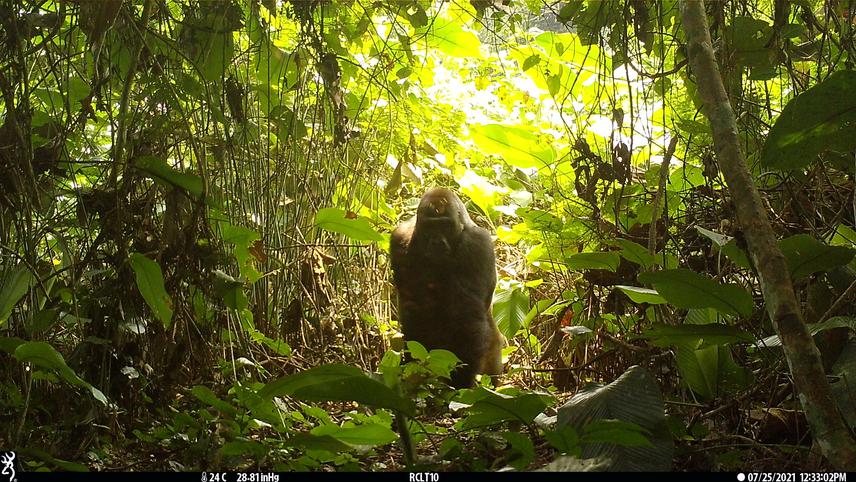Katherine Adelle Meier
Other projects
The Congo Basin is one of the world’s largest remaining tracts of tropical forest. At its heart lies an extensive web of wetland ecosystems fed by the Congo River known as the Cuvette Centrale. At 190,000 km2—an area the size of Washington state—it is both the world’s largest swamp forest and largest tropical peatland reserve. This project takes place at the Lac Télé Community Reserve (LT) in the Republic of Congo. A microcosm of the larger swamp landscape, LT is renowned for having one of the highest-known densities of western lowland gorillas in the world. These apes live in sympatry with chimpanzees, forest elephants, and other critically endangered megafauna.

A camera-trap image of a male gorilla in a Marantaceae thicket. © WCS Congo.
However, as LT is Congo’s only community reserve, these apes also share the reserve with approximately 20,000 forest-dependent people who have hunted them for generations. Nonetheless, ape populations have remained stable across time. Now, with socio-ecological changes hastening a ‘bushmeat crisis,’ primatologists, ecologists, and conservationists all question the capacity for human-ape coexistence. This project addresses the fundamental question: How does Lac Télé, as an inundated, human-dominated environment, support high gorilla densities and what are the prospects for continued human-ape coexistence there?
My specific objectives are to examine gorilla ecology in the swamp forests of LT as a composite adaptation to several entangled variables, namely: 1) fruit availability, distribution, and seasonal flooding regimes, assessed through phenological and vegetative surveys, 2) dietary composition and overlap with dietarily similar large-bodied mammals – chimpanzees and forest elephants – assessed using DNA metabarcoding of faecal samples, and 3) human environmental, cultural, political, and economic influences, assessed through ethnographic and participatory methods. Lac Télé is unlike any other place where apes are currently studied; seasonal flooding across the landscape transforms it into a refuge and likely underpins extreme physical and behavioural adaptations by apes and humans alike. Unfortunately, the floods also transform the landscape into a marginal space, lacking what is elsewhere considered baseline investments in scientific research and ecological monitoring, particularly considering the reserve’s primatological significance. Consequently, this research will be the first to gather fine-scale ecological and ethnographic data to understand interwoven ecologies of people and apes at LT. Framed within the context of climate change and the existential threat it poses to wetlands, this research takes on a new urgency in one of the world’s most delicate and poorly understood African ape strongholds.
Header: A plant identified by local guides as eaten by Lac Tele's gorillas and people alike.